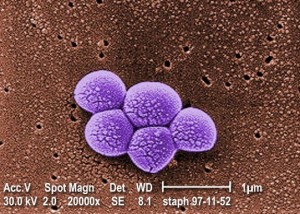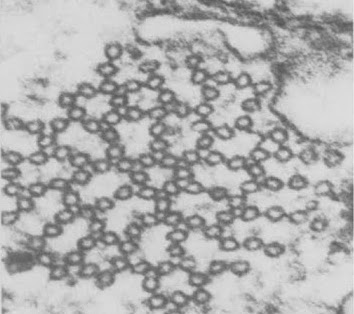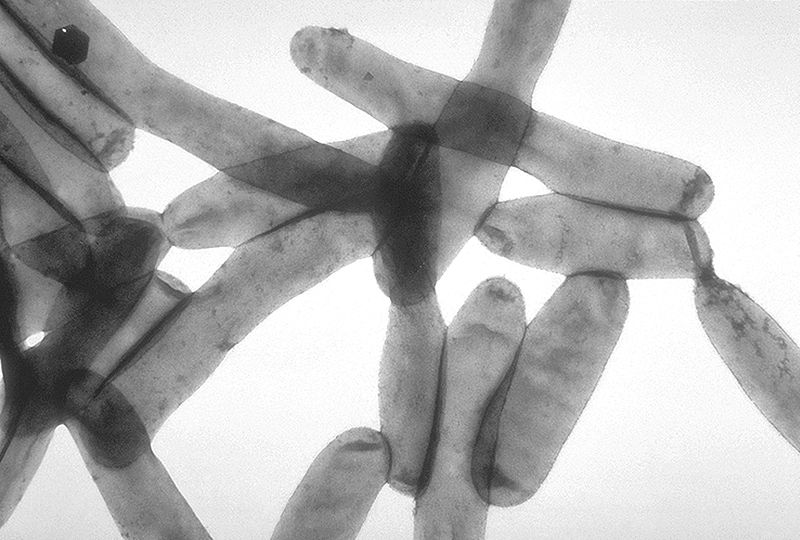Some microbes are evil minions of Hell (but not all)
Quite a few people think that microbes are evil, disease causing minions of Hell that should be eradicated. Supermarkets are handing out sanitary wipes: wipe the handlebar if you want to live, never mind that 90% of the food in the supermarket is worse for you than anything you may catch off that cart handle. Almost every public space looks like the secret basement level of the CDC, with alcoholic hand sanitizers and posters portraying the horrors of aerosol-borne infections. Microbes are the invisible enemy: you can’t see them, but they are deadly. You can sure kill them with copious amounts of ethanol.
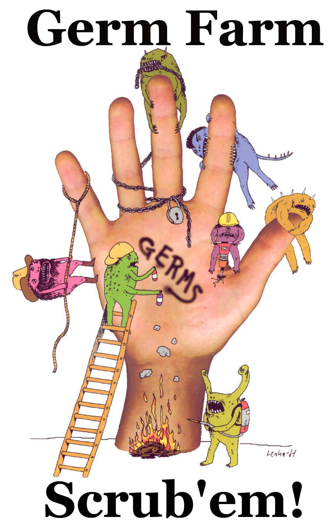
Actually, only a minority of microbes are pathogens. Some eukaryotes are parasitic and disease causing. There is Athlete’s foot (caused by a fungus) amoebal dysentery and other unpleasant experiences. But most are not. Also, most bacteria that live in us or on us are symbiotic and like us for our throwaway proteins, carbohydrates, nice 36.6C temperature, high humidity (armpit or mouth) and other goodies. Yes, some are pathogenic, and some do seem like evil little minions of the Devil. Those have ingenious mechanism which infect, wreak havoc, sometimes kill, and move on. But for every plague bacillus or burger bug out there, there are millions of other kinds of bacteria that really don’t do much, good or bad.
About archaea
There is one group of microbes that have no known pathogens: Archaea. Archaea are… different. An archaeon is as different from a bacterium as either is from a human. Superficially, bacteria and archaea look the same. Both are unicellular. Both do not have well-formed cellular organelles on the level that eukaryotes have. For those two reasons, archaea were thought, for a very long time, to be a type of bacteria. Today, virtually all microbiologists classify archaea in a domain of their own. Archaeal cell membranes are made up of their own unique type of building-blocks (lipids), the type which bacteria do not have, and neither do eukaryotes. Their cell wall is different than bacteria. Many live in extreme conditions: ocean smokers, geysers, hyper-saline lakes, the frozen Tundra, termite guts, cow stomachs and Charlie Sheen’s pants. Actually, the latter may be a bit too extreme even for archaea. Looking at phylogenetic marker genes, such as small subunit ribosomal RNA, (SSUrRNA) archaea indeed cluster as a domain unto themselves.

But of the hundreds of disease-causing microbes or pathogens that we know of, none are archaea. Which is odd. Plenty of disease causing eukaryotes and bacteria, but no archaea? Why is that? In a new paper published in Bioessays, Erin Gill and Fiona Brinkman try to answer this question.
First, Gill and Brinkman examined the most trivial hypothesis: we may just not have discovered archaeal pathogens yet. Their statistical analysis shows that this is possible, but unlikely. Here is the way the authors explain this: about 0.36% of known bacterial species cause disease (585 out of about 151,000 known cultured and uncultured species, a very low-bound estimate). Assuming that the diversity in archaea is about the same, we should have identified a few (the authors estimate .0036 x 4,508 species of archaea = 16) archaeal species which cause disease. This somewhat back-of-the-envelope calculation is a bit rough and laden with assumptions: one, that the diversity among known archaea is the same as among known bacteria. It was recently discovered that there is a huge marine diversity of mesophilic archaea for which we only have metagenomic (fragmented DNA sequence) data. Also, there may be many diseases we know nothing about, simply because our census of life on earth is far less than complete. Some of these archaea (and more of these bacteria) may be pathogens, only many have not been identified as such. Finally, historically, with bacteria, we were biased towards looking for pathogens. Bacteriology started as a medical discipline, and to this day many microbiology departments reside in universities’ medical schools. On the other hand, archaea were studied mostly by environmental microbiologists, who are not looking for pathogens necessarily, but are more interested in biogeochemical cycles and the diversity of life. But its claim does cause us to raise an eyebrow: not even one known archaeal pathogen? OK that’s odd. Quite worth looking into. Although the number of archaea we can examine may be too small.
So what exactly is going on?
Bacteria don’t kill people. Bacteriophages kill people?
A clue may lie in how virulence genes are arranged in the bacterial genome. Virulence genes are genes that code for proteins that let bacteria invade our body, cause disease and evading the immune system and drugs. Many of these genes are recognized as mobile: they can easily jump together from a disease causing strain to a benign strain, causing the latter to now become virulent. In many cases they can jump between different species. The vector that carries those genes is typically a bacterial virus, or bacteriophage. When a virus invades bacteria, it can uptake some of its DNA and incorporate it into its own genome. This DNA may later be deposited in another bacterium, turning a benign strain into a virulent one. The process of moving DNA between bacteria with a virus is called transduction, and viruses may also leave very specific “fingerprints” in transduced DNA.
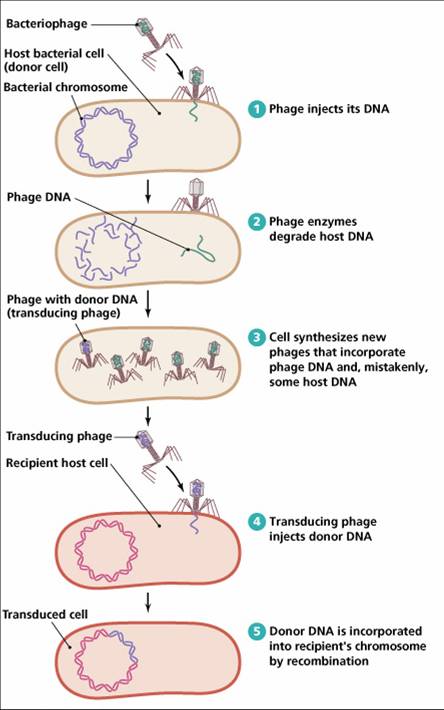
Generalized transduction. Source: Indian River State College
One might say that pathogenic bacteria are actually a vehicle to help bacteriophages proliferate. Better yet, bacteriophages and bacteria both can be viewed as vehicles to help virulence genes proliferate.

However, as far as we know, bacteriophages do not invade archaea. Archaea do have their own viruses, but those are different from bacteriophages. Archaea are a separate domain of life, and whatever parasitises one domain would be ill fit to parasitise another. After all, viruses that invade eukaryotes are also quite different from bacteriophages. (As an aside, this is what makes bacteriophages such an attractive idea as an anti-bacterial treatment method: after all, if we can inundate the human body with viruses that only infect bacteria, moreover only specific disease-causing bacteria leaving those that we need unharmed, that would make for a great silver bullet. But bacteriophage treatment is a matter for another post.) The differences are in shape, biochemistry and in genomes. There is little to no similarity in the genomic sequences of archaeal viruses and bacteriophages. No bacteriophages are known to infect archaea and vice-versa. That said, we know precious little about the diversity of bacteriophages, and close to nothing about archaeal viruses.
We do know that archaea have a very different cell-wall biochemistry than bacteria, and lack the receptor proteins which bacteriophages use to infect bacteria. So bacteriophages cannot infect archaea, cannot transmit virulence genes, and cannot transmit virulence. Gill and Brinkman present virulence from the bacteriophage’s (or rather the bacteriophage’s genes) point of view: both bacteria and their hosts are vehicles for propagating bacteriophage genes. A rather complex evolutionary mechanism.
But why haven’t archaea developed virulence of their own, independently of bacteria? Wouldn’t archaeal viruses develop a similar mechanisms? The authors claim the reason is that virulence evolution is a rare event. They argue that the evolution of virulence, at least the virus-transmitted secondary type is a multi-step process, and is therefore rare. My take on this argument: yes, it might be true for phage-transmitted virulence, but both bacteria and eukarya have evolved virulence mechanisms independent of viruses, encompassing many diverse mechanism that appear to have evolved independently. Hence, virulence itself is not so rare, even if the gene-island type may be.
All-in-all a thought provoking paper, which was very exciting to read. The authors qualify their hypothesis heavily, knowing that with bacterial, archaeal and their viruses, there are unknown unknowns, as the following bit of poetry illustrates:
 The Unknown
The Unknown
As we know,
There are known knowns.
There are things we know we know.
We also know
There are known unknowns.
That is to say
We know there are some things
We do not know.
But there are also unknown unknowns,
The ones we don’t know
We don’t know.
—Donald Rumsfeld, Feb. 12, 2002, Department of Defense news briefing
Gill, E., & Brinkman, F. (2011). The proportional lack of archaeal pathogens: Do viruses/phages hold the key? BioEssays, 33 (4), 248-254 DOI: 10.1002/bies.201000091














